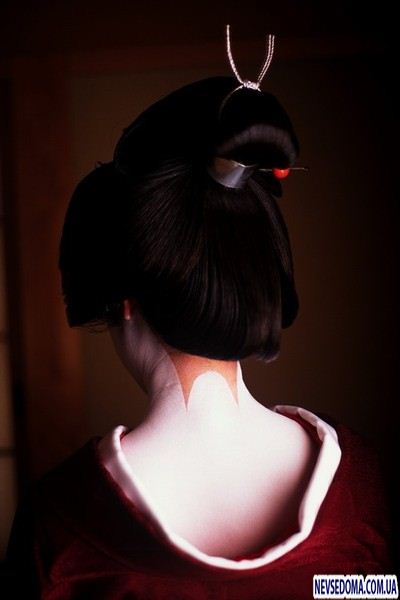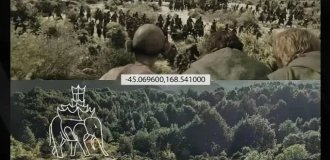Japan, Geisha (42 photos)
Europeans often confuse a geisha with a bar girl or an ordinary prostitute. This is mistake. Geisha are a historical phenomenon, a unique cultural tradition that has no analogues.

An entertaining, flirtatious, witty and erotic geisha was created specifically to amuse a man, to make him feel his own exclusivity, and not just for sexual pleasures. These are true masters of subtle conversation, mood and sensuality.



About the profession:
The main centers of geisha culture are Kyoto, Osaka and Tokyo, where they first appeared in the 17th century. And if initially the roles of geishas were played by men - actors and musicians of the Kabuki theater, then later only women became representatives of this profession. The “golden age” of geishas occurred in the 19th century; in those days they were real stars, muses for many poets and artists. It was then that the strict traditions of their art were laid down, which have survived almost unchanged to the present day.
At a time when Japanese women were destined for only two places in life: the home or the brothel, it was geisha who paved the way to the wonderful “world of flowers and willows” (??? karyu:kai), in which they managed to become aristocrats. Their way of life was quite clear: they spent most of their time, especially before World War II, in urban areas called hanamachi (?? - “city of flowers”). The most famous such areas are Gion and Ponto-cho, both located in Kyoto, where the traditional geisha lifestyle is more clearly preserved.






Work and life of a geisha:
Geisha work mainly takes place in tea houses and traditional Japanese restaurants, where the geisha acts as the hostess of the party, entertaining male guests. A geisha must direct the conversation and make her guests have fun, often flirting with them while maintaining her dignity. A geisha's earnings in a tea house are usually a fixed hourly wage for her work.
However, the most talented and successful geisha demonstrate their ability to play musical instruments, sing and dance in periodic performances open to the general public. Such performances allow the geisha to become a widely known and popular personality.






Start date:
The life and everyday life of little girls, future geishas, from an early age took place in geisha houses - okiya (Japanese ??) - where they were often sold by poor families. Throughout their childhood, they were forced to work first as maids, then as assistants to the main geishas in the house, who taught these girls the basics of their future profession and later helped them receive an education. In Japan, a similar tradition has ancient roots: the student lives in the house of his art teacher, first doing homework, assisting him and eventually becoming a master of his craft.
The course of study in specialized educational institutions includes various types of arts that a geisha must master: playing a musical instrument (usually the Japanese lute - shamisen), traditional types of singing, traditional dance, the art of conducting a tea ceremony, the art of making flower arrangements - ikebana, poetry, calligraphy, painting - that is, those types of arts that will allow the geisha to further entertain her clients. While studying, the future geisha registers, which allows her to have relationships with tea houses in the future. It should also be noted that attending classes is part of the life of a geisha until the end of her profession.
Watching the older geisha in her home, the girls learned to select a kimono suitable for the required purpose, put it on, and also learned the art of conversation. However, it is not necessary that the senior geisha of the okiya will directly train the future geisha: the future geisha acquires a so-called “older sister” (theoretically, this can be any girl who has become a geisha), who must train her, her “younger sister.” Often the eldest geisha in the house becomes the eldest sister, however there are many exceptions to this rule.







Becoming a Geisha:
By the age of 11-15, most girls in training undergo an initiation ceremony - from that moment on, they are called aspiring geishas (maiko) and receive a new name, which, in the vast majority of cases, includes part of the name of their older sister. From now on, the aspiring geisha must be dressed and combed appropriately. During this period, the older sister’s task is to introduce the aspiring geisha to her clients. This is why the experience of an older sister is so important: the more popular she is, the more chances an aspiring geisha will have to find a good client base.
The next step for a maiko is mizuage, a ceremony marking her rise in status. Maiko changes her hairstyle five times, symbolizing each step leading to becoming a geisha. In the mizuage ceremony, the tuft of hair at the top of the head is symbolically cut to signify the transition from a girl to a young woman with a more mature hairstyle. After the mizuage ceremony, the next important turn in the life of a maiko is the erikae ceremony, or “collar turning.” This occurs when a maiko exchanges the red embroidered "child" collar for the white collar of an adult geisha. As a rule, everything happens around the age of thirty.






Further career:
From the age of 18, a geisha has the opportunity to work according to a personal schedule, however, only successful geisha who receive many invitations to various events can take advantage of this opportunity. Also, from the age of 18, a geisha has the opportunity to acquire “danna”. Initially, “danna” was a patron, sometimes the lover of a geisha, and sometimes simply acting as a philanthropist. Often, a geisha and a danna have a close love relationship that ends in the birth of children. The dann's duty is that he must cover the numerous running expenses of the geisha he patronizes (for example, purchasing a kimono for her), as well as contribute to the growth of her popularity. The appearance of a danna in a geisha's career is not a mandatory element, but without this, the geisha has virtually no chance of leaving the okiya and becoming a full-fledged star in her profession.




Relationship between geisha and okiya:
As already noted, girls ended up in the geisha house, often sold there by their parents; others are the daughters of the mistress of the house - a geisha, who, due to age, stopped her work and performed accounting functions in her house. If the mistress does not have an heiress, she can adopt one of her geishas, which will allow the mistress to receive all the income brought by her daughter. Adoption by a mistress allows the geisha to receive the surname of the community, she becomes an atatori, and also receives the right to inherit okiya property in the future.
The coexistence of the okiya and the geisha living in it is mutually beneficial to both parties: the okiya receives a stable income, while the geisha gets access to an extensive collection of extremely expensive kimonos, without which she cannot practice her profession. More precisely, the geisha receives the right to order a kimono at the expense of the okiya, since every kimono in the life of a geisha is inviolable property; taking someone else’s kimono without asking is equivalent to an attack on personal integrity. Usually, when joining an okiya (and studying to become a geisha is also considered work), a contract of 5 to 7 years is signed. After this period, the geisha continues working or leaves the okiya.



Modern geishas:
Today, many geisha continue to live in traditional geisha houses, but some, especially in the capital, Tokyo, have become much more self-sufficient and independent. The traditions of the profession have been preserved mainly in Kyoto, in the prestigious areas of Gion and Ponto-cho.
There are very few geishas left in modern Japan, even in Kyoto: so, if in the 1920s there were more than 80 thousand geishas throughout the country, now their number does not exceed a thousand, of which there are about a hundred in Kyoto. Even visitors to Gion in Kyoto are more likely to encounter extras dressed as geishas posing for photographs or tourists in disguise than real geishas.
Such a sharp decline in the number of geishas is associated with the “colonization” of Western culture that occurred after World War II - there was virtually no place left for the original Japanese traditions. Modern geishas continue to live in the past of their country, contributing through their craft to the preservation of national culture. Now they consciously make a choice towards their profession - the times when poverty doomed one to become a geisha are gone.©Material from Wikipedia



























